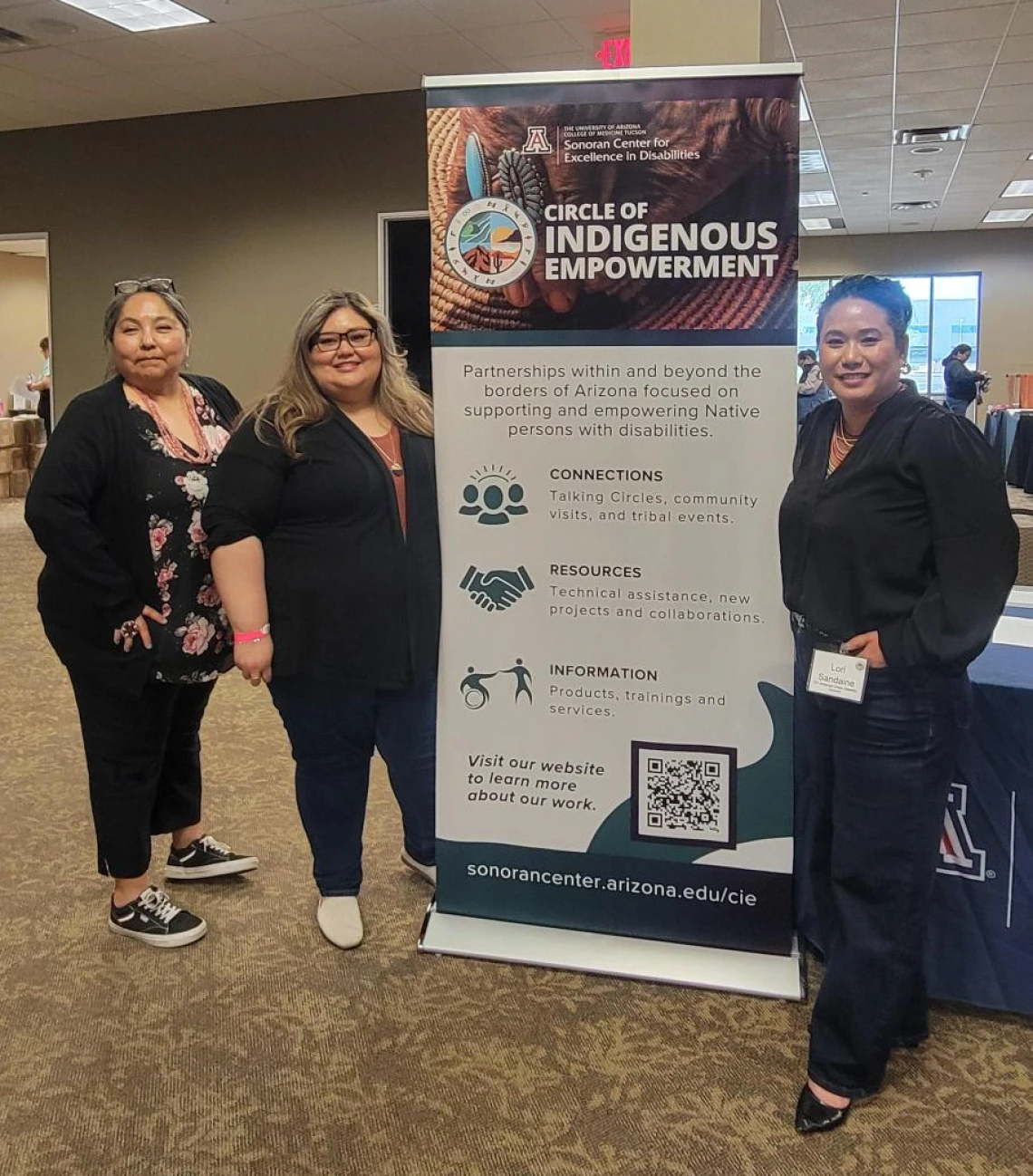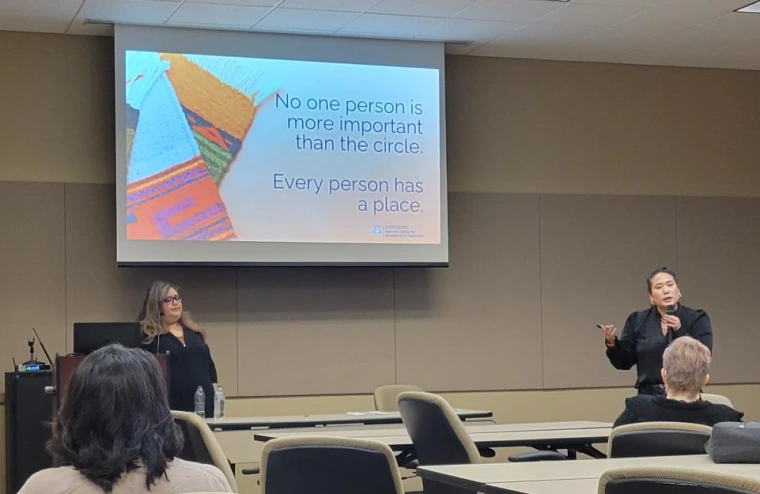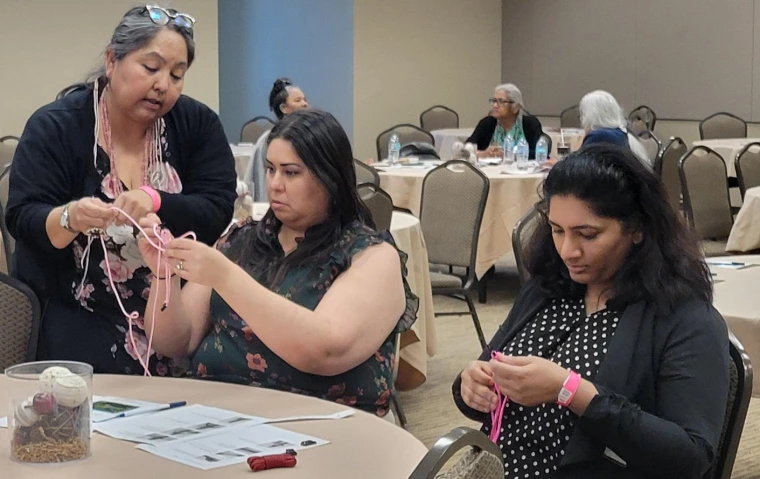Native Disability Summits 2025

By Drew Milne
On April 11 and 12, 2025, the 21st Annual American Indian Disability Summit and the 5th Annual Native Youth Disability Summit were held. The American Indian Disability Summit was held in person at the Desert Willow Conference Center in Phoenix, while the Native Youth summit was held virtually. Both summits provided an opportunity to network, share knowledge and skills, and address issues and challenges facing Native communities.
“Over the years the Sonoran Center has been actively involved in either presenting or exhibiting at the conference,” said Agnes Attakai. Attakai is the Sonoran Center’s Program Manager for Native Initiatives. She served on the planning committee for the Native Youth summit.
“I think the [American Indian Disability] summit over the years has been really successful in giving voice to community...to people who have been advocates and providing a space to network, talk, and continue the work.” The main goals of the American Indian Disability summit,[for participants ] are to learn what kind of research, resources and programs are available for people with disabilities.”
This year, the Sonoran center had several presentations at the American Indian Disability Summit. Mỹ Lê Sandaine and Rosa Rojas Franco presented on “Start with YES: shifting attitudes and creating a culture where “Yes, you can work” is the first and natural response” , while Attakai presented on Problem-Solving Through Art.” Julie Armin also presented on My Health My Choice: Adapting and Testing a Cancer Screening Education program for Native women with IDD. The Sonoran Center also had an exhibit table with a variety of information and resources available.
“We had presenters who spoke about various programs offered, opportunities to do hands-on activities, and a chance to learn more about Employment First through Mỹ Lê and Rosa's presentation - to reinforce the notion that everyone has a right to work,” Attakai explained. “The exhibit booth area was an opportunity to see partners’ work, network and meet new folks, and catch up with folks we’ve worked with before.”

Going into more detail about the Sonoran Center’s hands-on activity, Agnes described how her’ presentation highlighted traditional practices of rope-making, both as a way of connecting with culture as well as illustrating problem-solving techniques. These techniques have a wide range of uses, from helping people with disabilities accomplish tasks to strengthening the connections and camaraderie among the greater disability community.
“In the workshop I talked about the history of rope-making in indigenous communities,” she said. “We use that example of rope as a way to problem solve. The process of making rope for indigenous peoples was learning what items are around to make the product, and then honing the craft of braiding those strands together to make it very strong. For the activity, we made parachute cord bracelets, a modern day version of using “rope” for problems solving. During our discussions, we talked about how we are often challenged with learning a new task, and there are various ways people learn - through verbal directions, visual directions, hands-on experience, or asking questions of their peers nearby. Many times we have to reach out for help along the way, and there are others who know how to do it that are willing to help.”

On April 12, the day after the American Indian Disability Summit, the American Indian Youth Disability Summit was held virtually, from 9am to 3pm.
Agnes Attakai broke down the process of putting this virtual conference together, as well as the results:
“As part of the planning committee we worked with representatives from the Arizona Department of Health Services and Diversability Incorporated. We had youth leaders from Diversability who went through the Arizona Youth Leadership Forum to be part of the planning process. Over a few months we planned out the agenda, the title, and getting close to the event the MCs were identified - youth leaders who were part of Diversability. We had two MCs and and two keynote speakers, Mr. Michael Beers, a comedian who is well known to talk about his own disabilities and how he’s found humor in life and Virginia Rossel, the 2025 Jim E. Warne, Jr. Youth Leadership award recipient. In between, we had youth panel sessions on “Transition Journey to Indepenence” and “Intergenerational Impact of Relationship” shared personal experiences of resilience and perseverance related to their transition journey and the role intergenerational relationships had on their personal growth. Those were two of the well-regarded panels, when we had the youth leaders speak from their perspectives.”
Looking ahead, Attakai said that organizers hope to incorporate more youth voices and youth guides in the coming years.
“We have adults and programs that do present really useful information on transition, vocational rehabilitation, occupational therapy as a possible employment opportunity, but we’ll also need to look at what youth would like to see at a summit and then exploring ideas of possibly making the summits on a separate day or in person to get more youth involved and make sure the youth voice is first in the planning,” she said.
Reflecting on her favorite parts of the conferences, Agnes thought of the opening ceremonies and Marcus Harrison Leadership Awardees.
“My favorite part was at the very beginning. At the beginning of the day of the American Indian Disability Summit, they do a posting of the colors, a blessing, and a song, and then they have an opening speaker. They also give out the Marcus Harrison Leadership Award. This year, the awardee was Sarah Cedarface. er story was a very captivating and inspirational story of being a wheelchair basketball player and advocating for rights of individuals. It was really interesting to see - the people you don't know who are doing amazing things that you get to hear about in a short period of time, and you’re in awe of their lifetime of work. Last year, I was present and saw the same thing about the previous award winner. I think that was the best part - learning about the work of leaders and advocates in the field.”
Thinking of ways to improve the conferences for next year, Attakai brought up the possibilities of returning the Youth summit to being in-person, or re-integrating the two events into a single day.
“It would give youth an opportunity to come in person and meet other programs at exhibit tables and network with other folks. We’ll take a look at those and see what our youth leaders decide to do next year,” she added.
For those who missed the summits but would still like to get involved, subscribe to the mailing lists for the Sonoran Center and the Circle of Indigenous Empowerment. You can also follow both on social media for updates and upcoming events.
